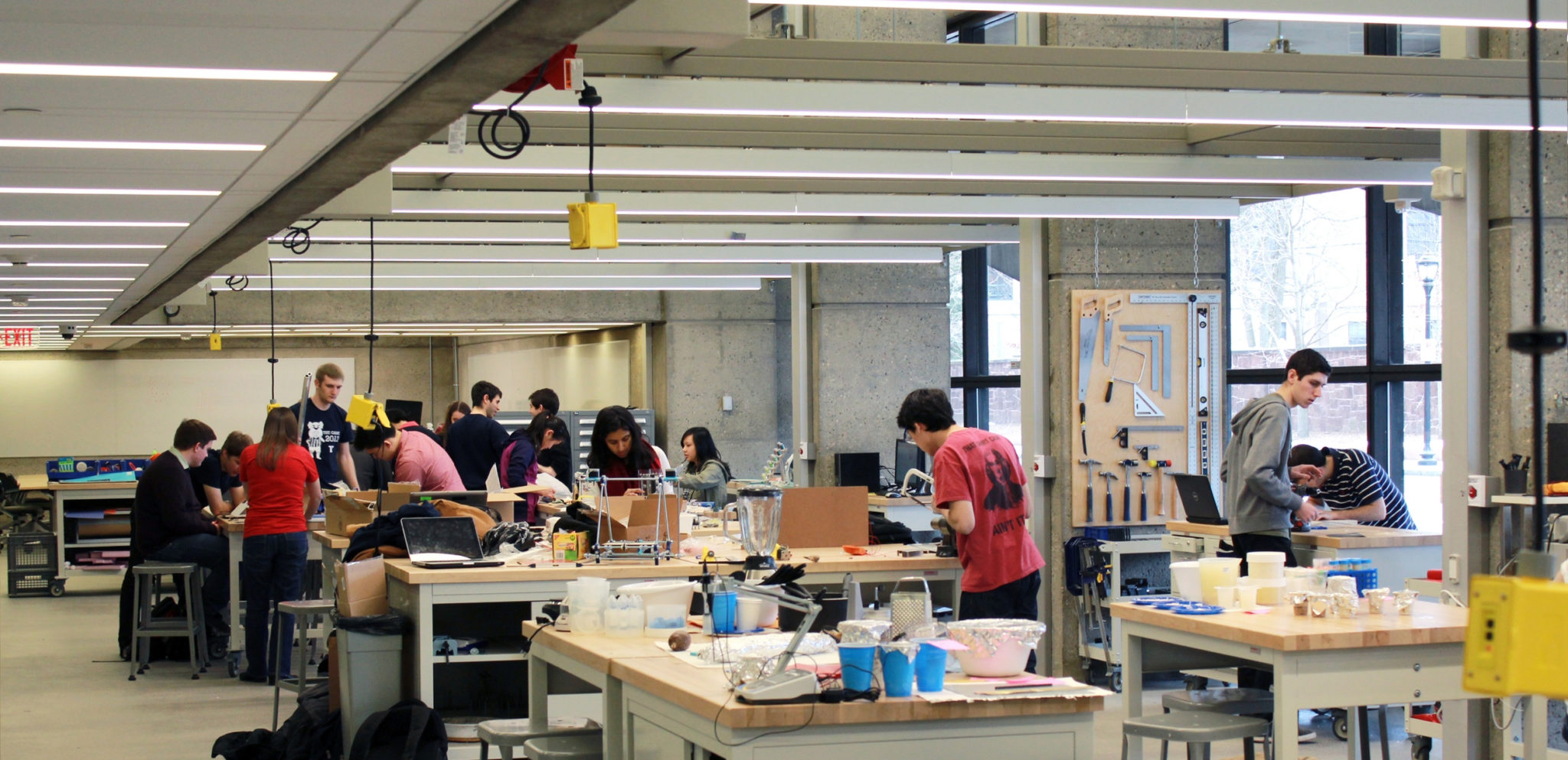
Courtesy CEID
This fall marks the fourth anniversary of a centerpiece in Yale’s STEM initiatives: the Center for Engineering Innovation and Design.
Housed on the first two floors of an imposing gray building on Prospect Street, the CEID was created in 2012 to foster collaboration in design fields. The first floor’s studio space contains an array of tools and facilities, including a metal machine shop stocked with drill presses and laser cutters, and a wood shop that includes a vacuum folder and injection molder. The CEID also provides prototyping materials and 3-D printers. The second floor contains a chemistry lab in addition to five meeting spaces.
After four years, the CEID is graduating its first class of students this year, a group of engineers who have spent their entire Yale careers with the space. Mechanical engineering major Alex Lee ’17 said the resources of the CEID were invaluable to his studies, which is why he works in the CEID as a design aid.
“I see it as a way to give back to a space that has been central to my growth as an engineer over the past four years,” Lee said.
In addition to the CEID’s extensive resources, the space has housed projects and clubs for undergraduates, graduate students and faculty. According to CEID Director Vincent Wilczynski, the space has brought together athletes with rocket scientists, philosophy students with engineers and French literature scholars with advanced technologies.
The CEID occasionally hosts events to bring together these disparate groups under one roof. For example, each August, the CEID has a party to kick off the school year.
“At that time … we invite all from the Yale community to a party featuring 300 cupcakes, snacks and swag,” Wilczynski said. “We have a DJ and put filters on the lights to give the center a unique feel for the night.”
The unique CEID community is also supported by student design aides like Lee who help registered CEID members use the equipment and are available every evening throughout week. Lee said aides teach weekly workshops, open to the Yale community, that cover a specific aspect of engineering.
Each summer, the CEID hosts a design fellowship program for Yale undergraduates in which students work in teams to find solutions for specific problems. Projects created through this summer program include EZ Ice — developed this past summer by Craig Wojtala ’18 and Joe Bedford ’18 — a backyard ice rink that can be assembled in under an hour. Last summer the program also spawned Conduit, a wearable device that holds multiple ID cards, developed by Tilman Bartelsmeyer ‘19, Hannah Knight ’19 and Aidan Brooks ’19.
Several mechanical engineering classes are currently being taught at the CEID. In the course “Capstone Design,” students learn how to design and construct electromechanical systems, Wilczynski said.
“The applications [of Capstone Design] range from tools to help blind students learn engineering, to musical instruments for K-12 education,” he said.
Another introductory engineering course taught in the CEID allows freshmen and sophomores to help real-life clients develop solutions to their specific design challenges. Current clients for the course include Yale’s lacrosse coach, a farm director, a rabbi and the Yale Center for British Art director. A more advanced class in coordination with physicians at the Yale School of Medicine, also taught at the CEID, involves designing and prototyping medical devices.
Yale research scientist Alyssa Siefert GRD ’15, who teaches the course alongside mechanical engineering professor Joe Zinter, said the first few weeks of the course focus on understanding problems in the medical device industry. Later in the course, several prototypes are built and tested, Siefert said. Courses like these have the CEID to thank, and Siefert praised the center’s resources.
“Students can quickly convey their ideas by drawing on whiteboards and fashioning together pipe cleaners, and then work with CEID staff members to design solutions involving 3-D printing, machining and electronics,” she said.
Highlighting how the course allowed her to interact closely with her classmates in the design process, Claudia See ’17, a current student in the course, called it “hands down, the best class I have ever taken at Yale.”







